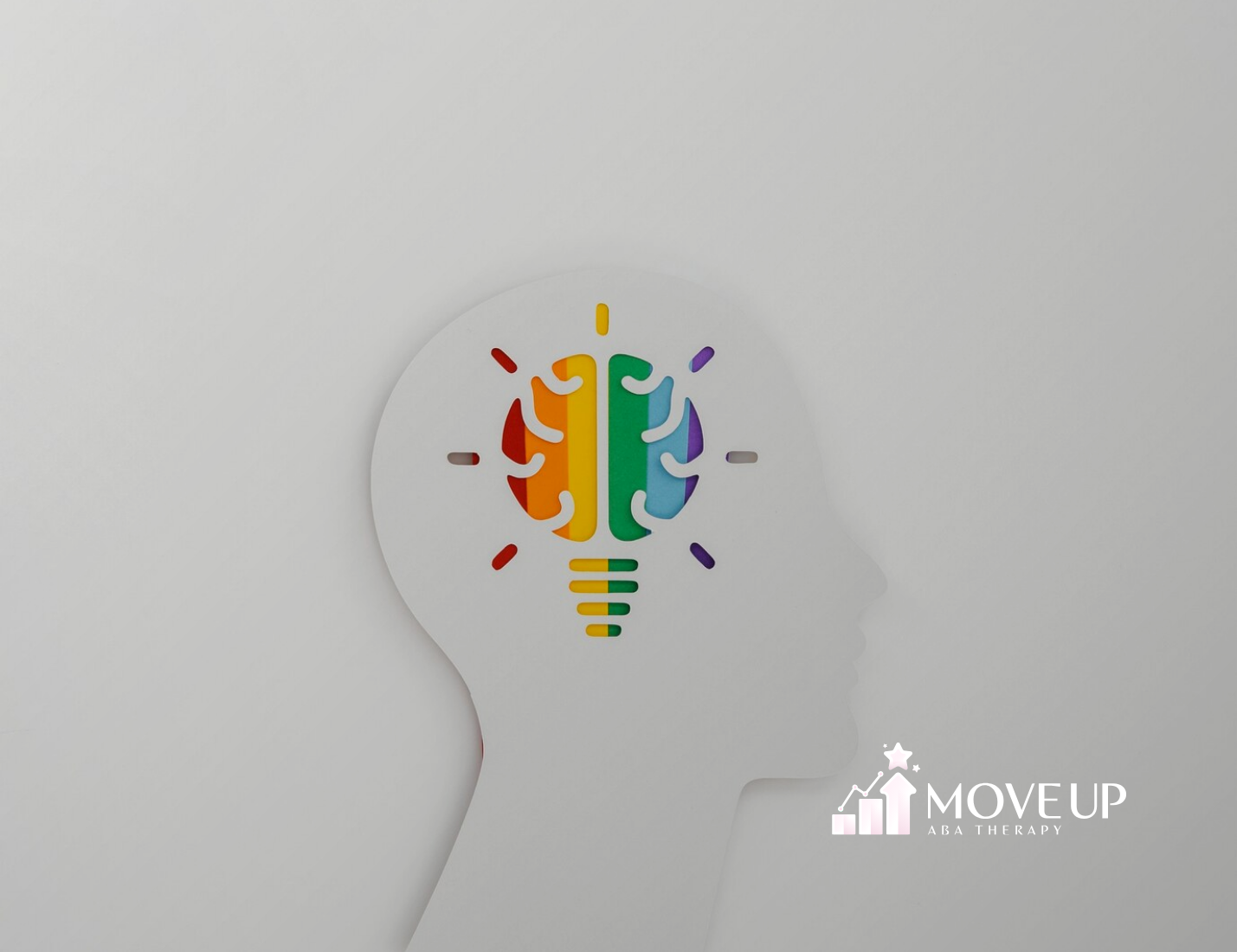The ability to understand and interpret the thoughts, feelings, and perspectives of others is a vital social skill that helps individuals navigate social interactions. This ability is known as the theory of mind (ToM). It allows people to predict how others will behave, interpret emotions, and understand social cues. However, many individuals with autism spectrum disorder (ASD) experience challenges in this area, which can impact their social interactions and communication.
In this blog post, we will explore the concept of the theory of mind, how it relates to autism, and why deficits in this area are common among individuals on the autism spectrum. We will also discuss practical strategies that can help support the development of theory of mind in children and adults with autism. Whether you’re a caregiver, educator, or therapist, understanding the role of the theory of mind in autism can improve social skills and help foster more meaningful connections.
What is the Theory of Mind?
Theory of mind refers to the cognitive ability to attribute mental states (thoughts, beliefs, desires, intentions, and emotions) to oneself and others. It’s essentially the ability to understand that other people have their own thoughts, feelings, and perspectives that may be different from one’s own.
ToM is a fundamental skill for successful social interaction. For example, when you’re talking to a friend, you intuitively understand that they have their own opinions, feelings, and experiences. You may adjust your behavior based on your understanding of how they might feel or think about the conversation. In children, ToM typically develops gradually over the first few years of life.
However, the theory of mind is more complex than simply recognizing emotions. It involves understanding that people’s thoughts and beliefs may not always align with reality. For example, a child with a developing theory of mind will recognize that their friend might believe a toy is still in one place, even though it has been moved.
Theory of Mind and Autism: The Connection
Individuals with autism often experience difficulty with theory of mind, which can lead to challenges in social communication and interaction. These difficulties are a core feature of autism and contribute to the social and emotional difficulties commonly associated with the disorder.
Several aspects of the theory of mind can be impacted by autism:
-
Difficulty Understanding Emotions: Individuals with autism may struggle to recognize and understand the emotions of others. They might not always recognize facial expressions, body language, or vocal tones, which are essential for understanding how others are feeling.
-
Challenges with Perspective-Taking: A key component of ToM is the ability to understand that other people have their own perspectives. People with autism may have difficulty recognizing that others have different thoughts, feelings, or experiences, leading to challenges in empathy and perspective-taking.
-
Literal Thinking: Individuals with autism often think in more literal terms, which can make understanding sarcasm, jokes, or figurative language difficult. This is because these forms of communication rely on understanding the intentions and beliefs behind words, which may not be immediately apparent.
-
Struggles with Deception and False Beliefs: Understanding that others can hold false beliefs or be deceived is a significant challenge for many individuals with autism. This is known as the “false belief task,” where a child is asked to predict another person’s actions based on their misunderstanding of a situation.
Why is the Theory of Mind Important for Individuals with Autism?
Theory of mind is crucial for social communication, forming relationships, and understanding social dynamics. Without a well-developed ToM, individuals with autism may find it harder to engage in reciprocal conversations, recognize social cues, or form meaningful friendships.
Here are some of the key social challenges that arise due to deficits in the theory of mind:
-
Social Isolation: Without the ability to understand others’ emotions or perspectives, individuals with autism may struggle to connect with peers or form close relationships. They might not pick up on social cues that indicate interest or empathy, leading to feelings of isolation.
-
Misunderstanding Social Situations: Difficulty understanding how others are feeling or thinking can lead to misunderstandings in social situations. For example, an individual with autism might not recognize when someone is upset, which can lead to unintentional social faux pas.
-
Limited Empathy: Empathy is a key component of social relationships. Without a fully developed theory of mind, individuals with autism may find it difficult to empathize with others, which can affect how they respond to emotions or events in others’ lives.
-
Difficulty with Social Expectations: The Theory of mind helps individuals understand and predict how others expect them to behave in different situations. Without it, individuals with autism may miss important social cues, making it challenging to meet expectations in settings like school, work, or family gatherings.
How to Support the Development of Theory of Mind in Autism
Although theory of mind difficulties are a core feature of autism, research suggests that interventions and strategies can help support its development. Below are some practical strategies to enhance ToM skills in individuals with autism:
1. Modeling and Role-Playing
One of the most effective ways to teach theory of mind is through modeling and role-playing. By acting out different social scenarios, children with autism can learn to recognize how others might think, feel, or behave in those situations. Role-playing games can help children practice perspective-taking and empathy in a controlled, low-pressure environment.
2. Use of Social Stories
Social stories are short, simple stories that explain social situations and appropriate behaviors. They help children with autism understand the social rules and expectations of different situations. Social stories can be a powerful tool for teaching theory of mind by illustrating how others may feel, think, or react in specific contexts.
3. Emotion Recognition Training
Since individuals with autism often have difficulty recognizing and interpreting emotions, it’s helpful to focus on teaching emotion recognition skills. This can involve using flashcards, videos, or real-life examples to help individuals learn to identify emotions through facial expressions, tone of voice, and body language. Practicing these skills can improve understanding of how others feel and how to respond appropriately.
4. Engage in Perspective-Taking Exercises
To help individuals with autism develop perspective-taking skills, it’s useful to engage in exercises that prompt them to consider how someone else might be thinking or feeling. For example, reading books or watching videos together and discussing what different characters might be thinking can help build ToM.
5. Interactive Games and Activities
Interactive games like “Guess What I’m Thinking,” “Simon Says,” or board games that involve taking turns and understanding others’ thoughts and intentions can be a fun and engaging way to promote the theory of mind. These activities encourage children to practice social rules, take others’ perspectives, and predict behaviors.
6. ABA Therapy
Applied Behavior Analysis (ABA) therapy can be used to teach social skills and theory of mind concepts in a structured and systematic way. Through ABA, therapists can help individuals with autism practice social scenarios, model appropriate behavior, and reinforce positive interactions. ABA focuses on breaking down social skills into manageable steps, making it easier for individuals to learn and apply them.
Conclusion
Theory of mind is an essential skill for social interactions, and its development plays a significant role in navigating relationships and understanding the world around us. For individuals with autism, deficits in the theory of mind can lead to social difficulties, misunderstandings, and emotional challenges. However, through targeted interventions like role-playing, emotion recognition training, and ABA therapy, individuals with autism can make significant strides in developing their ToM skills.
At Move Up ABA, we understand the importance of the theory of mind in helping individuals with autism succeed in social environments. By using evidence-based strategies like ABA therapy, we work with individuals and their families to develop social and communication skills that enhance daily functioning and quality of life.
Frequently Asked Questions
1. At what age do children develop the theory of mind?
Children typically begin developing the theory of mind between the ages of 2 and 5, although it can vary depending on the individual. By age 5, most children have a basic understanding of others’ thoughts and emotions.
2. How can I tell if my child has difficulties with the theory of mind?
Signs of difficulty with theory of mind include problems with empathy, understanding social cues, taking others’ perspectives, or engaging in reciprocal conversations. Children with autism may also struggle to understand sarcasm, jokes, or figurative language.
3. Can the theory of mind be improved in children with autism?
Yes, the theory of mind can be improved with targeted interventions like role-playing, emotion recognition training, social stories, and ABA therapy. With consistent practice and support, children with autism can develop better social and communication skills.
Sources:
- https://www.simplypsychology.org/theory-of-mind.html
- https://educationonline.ku.edu/community/social-difficulties-in-autism-spectrum-disorder
- https://pmc.ncbi.nlm.nih.gov/articles/PMC4457285/
- https://pmc.ncbi.nlm.nih.gov/articles/PMC3085906/
- https://pmc.ncbi.nlm.nih.gov/articles/PMC6923148/






